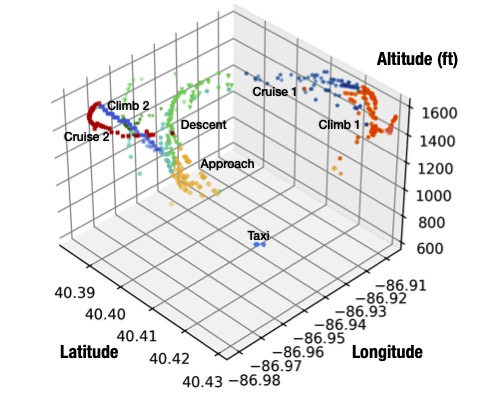 Approximately 500 aircraft landing facilities in the United States, including 378 major airports, provide scheduled air services. In addition to these, more than 4,000 general use airports exist – including non-commercial, public-use airports, and landing facilities for first responder and disaster relief operations. These general use airports seldom have air traffic control facilities, which means that specific operations details cannot be quickly, easily or accurately obtained. And that means that these non-towered airports cannot develop reliable aircraft operations for accurate noise or emissions models.
Approximately 500 aircraft landing facilities in the United States, including 378 major airports, provide scheduled air services. In addition to these, more than 4,000 general use airports exist – including non-commercial, public-use airports, and landing facilities for first responder and disaster relief operations. These general use airports seldom have air traffic control facilities, which means that specific operations details cannot be quickly, easily or accurately obtained. And that means that these non-towered airports cannot develop reliable aircraft operations for accurate noise or emissions models.
Qilei Zhang, a graduate research assistant in Purdue Polytechnic’s School of Aviation and Transportation Technology, examined this lack of information and recognized the need for a data-driven approach to accurately quantify operation estimates for general aviation airports. He decided to focus specifically on flight phase identification – the process of classifying time-series air vehicle flight data into different flight phases – to provide these estimates and, ultimately, develop actionable noise and emissions models for airports of every size.
“We want to find the duration of flight phases – takeoff, landing, how long every phase takes,” said Zhang. “This is not recorded by the aircraft itself.”
Accurate emissions predictions
Zhang’s ultimate objective is to estimate the noise and emissions around an airport in order to achieve a better environment for the people who live in the area. Accurate estimates of operation times lead to accurate estimates of emissions, which is needed in order to mitigate the impact of those emissions and achieve a better environment for the people who live and work in and around the airport.
From an emissions perspective, 100LL is the only remaining transportation fuel in the United States that contains the additive tetraethyl lead (TEL). This fuel, which powers small aircraft – the kind of aircraft often found at non-towered airports – currently is the largest source of lead emissions in the U.S. Studies like Zhang’s are crucial to developing effective estimates of the impact of such pollution. From a longer-term perspective, manufacturers and aviation operators may be able to use airborne data to calculate and report noise levels, while regulators could use third-party data to provide a better evaluation of environmental noise.
Zhang’s promising algorithm can provide a cost-effective way to obtain specific flight operations’ details for non-towered general aviation airports.
 The challenge of publication
The challenge of publication
Zhang’s research, titled, “Development of a Reliable Method for General Aviation Flight Phase Identification,” hinged on machine learning technology, which allows collection of specific operational details via Automatic Dependent Surveillance-Broadcast (ADS-B) data. The paper was coauthored by Zhang's doctoral advisor, John Mott, associate professor of aviation technology, along with Mary Johnson, assistant department head for graduate education and research and professor of aviation and transportation technology, and John Springer, professor of computer and information technology.
“The increasing availability and economy of capturing and processing ADS-B data show promise for improving accessibility to a wide variety of information about the aircraft operating in the vicinity of these airports,” said Zhang.
Along with the challenge of conducting research during a pandemic, Zhang also faced his first experience with academic writing.
“I think the research is going smoothly,” said Zhang. “The writing part is the hardest.”
Zhang persevered and successfully published his article in IEEE in August 2021.
Now that the article is complete, he is focused on the next steps of his research. Zhang intends to improve the accuracy of the motel to estimate operation times. While his current model is based on existing data, he wants to develop another method that can deal with real-time data instead of existing data sets, creating a real-time data flow.
